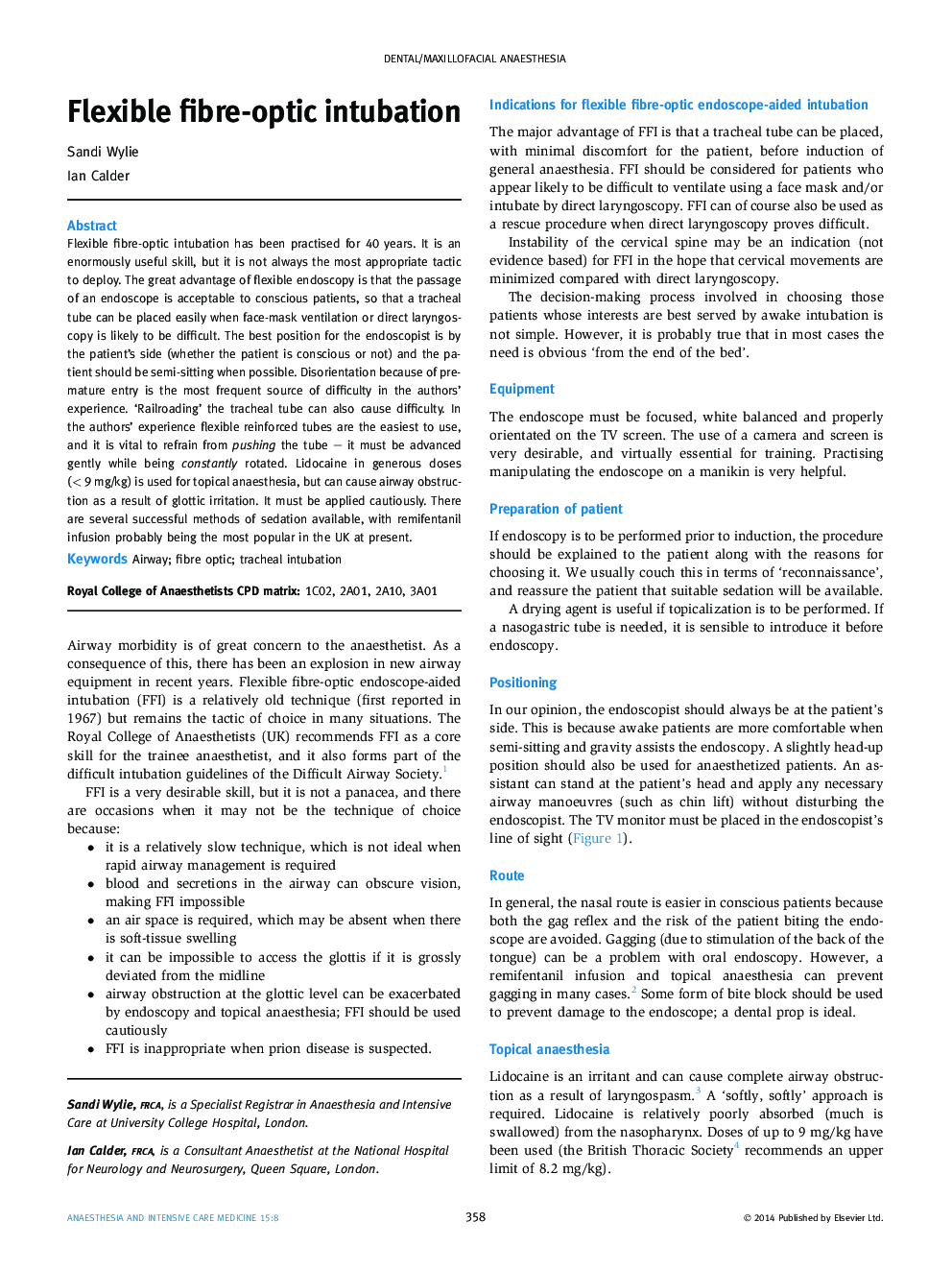| Article ID | Journal | Published Year | Pages | File Type |
|---|---|---|---|---|
| 2742316 | Anaesthesia & Intensive Care Medicine | 2014 | 4 Pages |
Flexible fibre-optic intubation has been practised for 40 years. It is an enormously useful skill, but it is not always the most appropriate tactic to deploy. The great advantage of flexible endoscopy is that the passage of an endoscope is acceptable to conscious patients, so that a tracheal tube can be placed easily when face-mask ventilation or direct laryngoscopy is likely to be difficult. The best position for the endoscopist is by the patient’s side (whether the patient is conscious or not) and the patient should be semi-sitting when possible. Disorientation because of premature entry is the most frequent source of difficulty in the authors’ experience. ‘Railroading’ the tracheal tube can also cause difficulty. In the authors’ experience flexible reinforced tubes are the easiest to use, and it is vital to refrain from pushing the tube – it must be advanced gently while being constantly rotated. Lidocaine in generous doses (< 9 mg/kg) is used for topical anaesthesia, but can cause airway obstruction as a result of glottic irritation. It must be applied cautiously. There are several successful methods of sedation available, with remifentanil infusion probably being the most popular in the UK at present.
